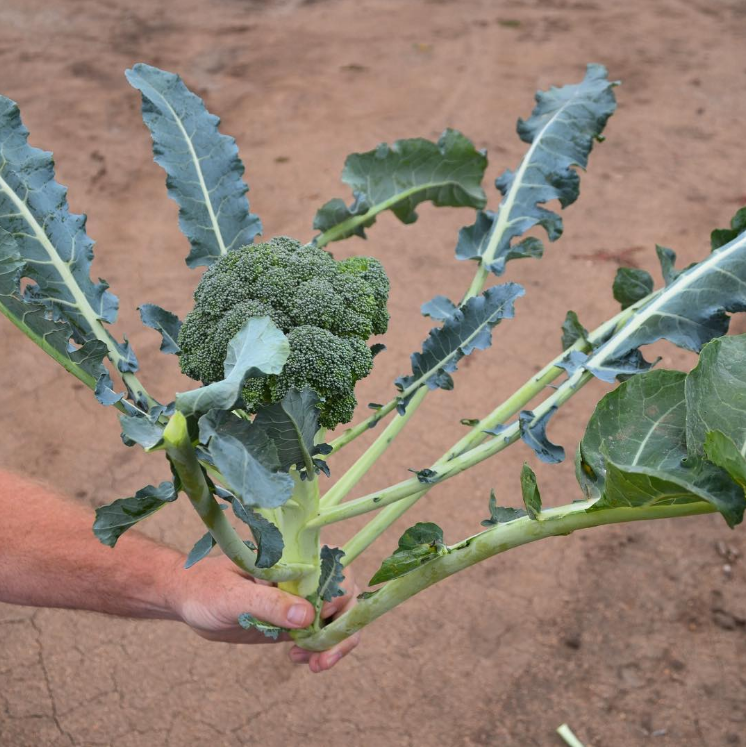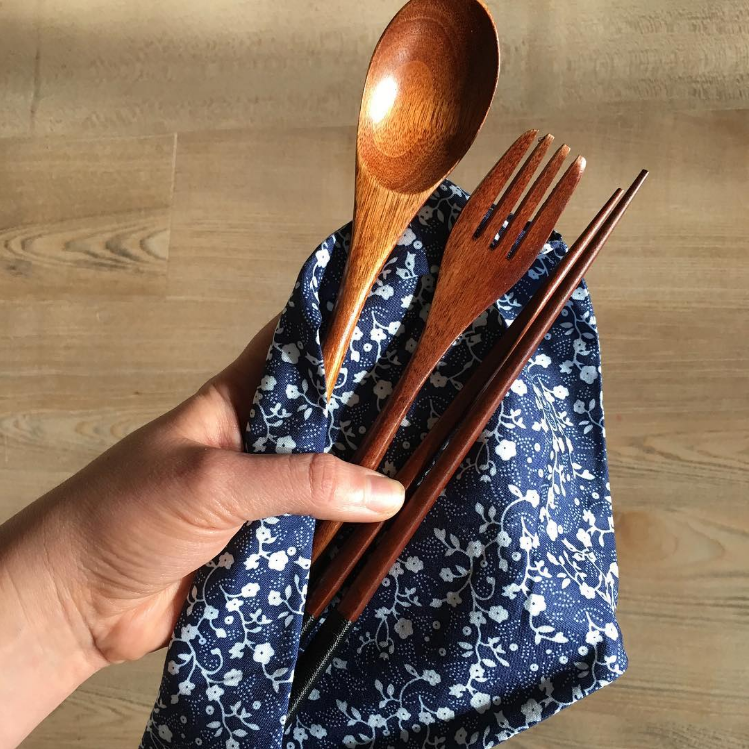Tips for Becoming a Zero Waste Warrior
My heroes don chef whites rather than capes. They’ve traded in guns for peelers, paring knives, and roasting pans. Their superpower? Saving the world one delicious meal at a time.
Seeing a chef transform random ingredients into a sumptuous plate of food still feels like the closest I will ever come to experiencing pure magic. In recent years I’ve seen the power of this magic — the impact eco-conscious food preparation and service can have on our environment and our communities — and I’ve been inspired to bring those techniques into my home. It’s been a journey, an “imperfect” one at that, but I’ve learned a lot along the way. I’m excited to share the best food-waste-fighting tips from Bon Appétit Management Company’s kitchens and cafés.
Got some tips for us? Share your favorite Waste Warrior tricks in the comment section or via social media with the hashtag #wastewarriortips
Challenging Food Norms

The stems and leaves of broccoli are also edible and delicious
At some point in culinary history, Americans decided that broccoli crowns were the only part of the broccoli plant that belonged on our plates. This seemingly harmless decision has led to massive amounts of food going to waste. There is so much more to the broccoli plant than just the crown; the stems and the leaves make up the majority of the plant, yet they’ve been overlooked, tossed to the side by consumers or disked by farmers into the ground. Chefs know that with a little TLC, they can be the star of the plate — as can many other plant parts considered “trimmings” and “weeds.”
Try looking in your compost bin and asking yourself, “Is all this really waste”? If kale ribs, fish heads, and bruised produce can star on the menus of some of the hottest restaurants in the world (see Dan Barber’s WastED pop up), then there’s no reason they can’t make a debut in home cooking. There is so much more we can do to save these underutilized and underappreciated parts of fruits and vegetables. Click for recipes for Roasted Carrot and Carrot Greens Salad from Washington University in St. Louis Executive Chef Patrick McElroy and Chilled Broccoli Salad from Roger Williams University Executive Chef Jon Cambra to get you started.
Even if we can’t find culinary uses for these products (I’m still scratching my head over banana peels), what’s stopping us from finding other applications? Executive Chef/Manager Paul Lieggi from Mt. Angel Abbey has lots of ideas for what to do with citrus peels (spoiler alert) — they can be used in so many other ways besides cooking. Check out his 5+ Ways with Citrus Peels for full details.
Upcycling
A major weapon against waste in any kitchen is becoming a master of repurposing. Leftovers are almost inevitable, because precisely projecting how much people will eat isn’t easy, and most of us err on the side of making too much rather than too little. Unfortunately, this leads to quality food getting wasted, and money being dumped down the drain.
Our chefs do an excellent job of “upcycling,” or creatively re-thinking leftovers (prepped but not served, always maintaining food safety standards). Excess quinoa from the lunch entrée may find its way into a new salad at dinner, or meatballs may go from spaghetti at one meal to an Italian meatball soup at another. Coming up with new ways to utilize leftover ingredients without having them feel or taste repetitive takes some finesse, but even newbie chefs can get recipe ideas from apps like these or books like Dana Gunder’s Waste Free Kitchen Handbook. These techniques will save you money and keep delicious food out of your waste bin.
Saying Sayonara to Single-Use Disposables

Ditch disposables, bring reusables
To be a true Waste Warrior, we can’t focus solely on the food; we must also think about the waste generated from the vessels in which the food is served. Single-use disposable cups, clamshells, and utensils are massively polluting our oceans and waterways. Precious resources go into creating these products that we only use once and then throw away or compost.
The best way to reduce your use of disposables is by 1) refusing what isn’t absolutely necessary to your dining experience and 2) being prepared. Straws, coffee sleeves (and sometimes lids), and even that massive pile of paper napkins probably aren’t critical to your dining experience and could be forgone with a simple “no thank you” or a “No utensils necessary” note in your delivery app.
But if you really want to use a straw, for example, consider bringing your own! Waste Warriors carry a reusable straw and fork, knife, spoon, chopsticks, and napkin with them wherever they go so they can always refuse their disposable counterparts. Yep, I really do this. Start a zero-waste kit of your own, made up of reusable versions of disposable serviceware you normally use, and store it in your car or at your office so it’s always on hand. With a simple swap from disposable serviceware to reusable, you’ll be well on your way to zero-waste nirvana.
You don’t have to be a trained chef to minimize your food waste. Culinary skills certainly help, but a shift in perspective is equally powerful. Reprioritizing how we value food can go a long way in preventing waste. Remember the saying, “One man’s trash is another man’s treasure”? It’s never been more relevant. There is so much value, so many resources, embedded in the food and packaging products we so casually waste. How you look at them — and what you do with them — makes all the difference.
Got some tips for us? Share your favorite Waste Warrior tricks in the comment section or via social media with the hashtag #wastewarriortips.